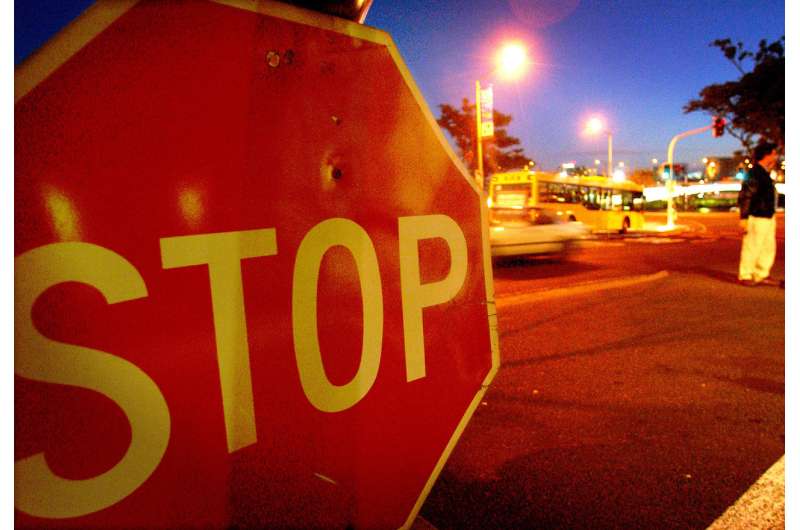Cyclist/motorist crashes worse at stop/give way junctions

Cyclists are being more seriously hurt in crashes with motor vehicles at intersections with 'Stop' or 'Give-way' signs than at intersections with traffic signals or without any signage, a QUT study has found.
Rabbani Rash-ha Wahi, from QUT's Centre for Accident Research and Road Safety—Queensland (CARRS-Q), analysed 13 years of Queensland police crash records to investigate how the way traffic was controlled at intersections influenced the injuries to riders in collisions with motor vehicles.
Mr Wahi published his research findings in the Transportation Research Record (TRR): Journal of the Transportation Research Board last week.
"Many studies have identified factors that contribute to bicycle–motor vehicle (BMV) crashes, but little is known about determinants of cyclist injury severity under different traffic control measures at intersections," said CARRS-Q Director and supervisor of the project, Professor Narelle Haworth.
"Mr Wahi analysed 5,388 police-reported bicycle–motor vehicle crashes at intersections in Queensland from 2002 to 2014 and found almost 40 percent had occurred at junctions with Stop or Give-way signs."
Mr Wahi said one reason for this was that drivers or cyclists have their view obstructed when approaching a give way condition or when leaving from a stopped position.
"In most cases, the bicycle and motor vehicle were approaching each other at right angles and possibly collisions occur because drivers have difficulty with judging gap sizes and speed before deciding whether to enter from the minor road or perform a turning manoeuvre," he said.

"What the study found hardly surprises anyone who rides: the driver was considered at fault by police in 63 per cent of bicycle-motor vehicle crashes."
Mr Wahi also found that drivers were most often at fault at intersections with Stop or Give-way signs. Yet drivers and cyclists were equally likely to be at fault when the intersection was controlled by traffic signals.
"However, when cyclists were judged to be at fault in crashes at Stop and Give-way signs and uncontrolled intersections, their injuries were more severe," he said.
"Speed zone appears to have influenced injury severity only at Stop/Give-way signs and may reflect differences in intersection design rather than speed limits as such."
Mr Wahi found cyclists' injuries were more severe in bicycle–motor vehicle crashes at unsigned intersections in hilly areas than in flat areas.
"It may be that cyclists and drivers can't see each other until too late because of the crests and dips, or that they were travelling faster," he said.
"The large number of bicycle motor-vehicle crashes at four-way intersections with traffic lights suggested that cyclists may not have enough time to cross the intersection before motorized cross traffic receives a green light, possibly because signal timing is often based on motor-vehicle speeds."
More information: Influence of type of traffic control on injury severity in bicycle-motor vehicle crashes at intersections. eprints.qut.edu.au/117418/
Provided by Queensland University of Technology



















